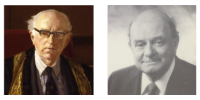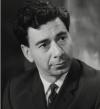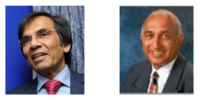UKKA: 75 Years of Renal Basic Science
In the last 75 years, UK renal science has consistently ‘punched above its weight’ compared to the rest of the world, making numerous major contributions despite our relatively small research workforce and limited infrastructure. Much has happened over this period.
It is useful to remember that, in the early 1950s, nephrology did not exist as a speciality and renal science was unrecognisable compared to today. Indeed, research was dominated by whole subject physiology, with investigators often using themselves as study subjects. At this time, there was little work on immunology, renal biopsy was not available, and there was no molecular or cell biology.
This month we celebrate the UK’s achievements over 75 years in renal laboratory science, highlighting themes where UK investigators have made a sustained and major contribution of international significance. Below we include selected studies in which most, but not all, of the leaders were RA/UKKA members. We also note the importance of remembering the laboratory team behind each lead investigator.
The Twentieth Century
1950s
Douglas Black (Douglas Black – UK Kidney History) and Malcolm Milne (Malcolm Milne, 22 May 1915 - 3 April 1991 | Biographical Memoirs of Fellows of the Royal Society) in Manchester are world leaders in renal cation and amino acid handling.

Stan Peart (William Stanley Peart | UK Kidney Association) in Edinburgh, and then London, discovers noradrenaline and angiotensin 1.

Oliver Wrong (Oliver Wrong | UK Kidney Association) in Manchester, then London, delineates different patterns of renal tubular acidosis and describes the acidification test. Over later decades he identifies Dent’s disease and establishes its molecular basis.

1960s
Cyril Chantler (Cyril Chantler – UK Kidney History) in London works out the method that is still in use to measure GFR by Cr51-EDTA clearance.

Transplant surgeon Roy Calne (Roy Calne – UK Kidney History) in Boston, London and Cambridge brings azathioprine through lab evaluation into clinical practice and, in the 1970s, does the same for cyclosporin.

1970s
Keith Peters, Martin Lockwood (Christopher Martin Lockwood | UK Kidney Association) and Andy Rees in London, characterise the Goodpasture antigen.
1980s
Chris Winearls in London, then Oxford, provides the first proof that EPO is a safe and effective treatment for renal anaemia & erythropoeitin.

Peter Harris and Steve Reeders in Oxford localise and characterise the PKD1 and then the PKD2 gene in Polycystic Kidney Disease.

1990s
Chandra Mistry, Ram Gokal and Netar Mallick in Manchester take icodextrin from concept through laboratory evaluation into clinical practice as a non-glycaemic osmotic agent for peritoneal dialysis. Icodextrin in peritoneal dialysis – UK Kidney History.

Peter Ratcliffe in Oxford begins to study signalling mechanisms for renal EPO production, leading eventually to his group unravelling an ubiquitous oxygen sensing system in mammalian cells.

The Twenty-First Century
Tim Goodship in Newcastle identifies the molecular basis for atypical HUS leading to effective complement-blocking therapy.

Paul Brenchley, who had begun to work on the immune basis of membranous nephropathy in the 1980s, becomes a leader in its molecular characterisation. Membranous nephropathy – UK Kidney History.

Ultimate Accolades
At the pinnacle of renal science, we celebrate those who have received the highest accolades for their work.
Nobel Prize
Lasker Award
Peter Ratcliffe (2016)
Fellows of the Royal Society
Stan Peart (1969), Roy Calne (1974), Malcolm Milne (1978), Keith Peters (1995), Peter Ratcliffe (2002)
